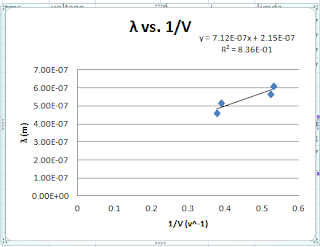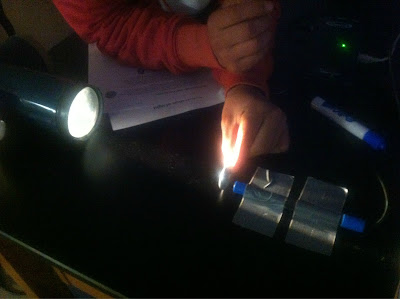The purpose of this project is to build a cloud chamber, which can be used as an apparatus to track particles such as alpha, beta, and muons.
PRET Chart
Bill of Materials
The only material we have to buy is the dry ice.
$10 for every time we run the experiment.
Criteria for Success
1. We can observe the formation of cloud inside the chamber.
2. The cloud bends under the influence of magnetic field.
3. We can collect data to compare to published values.
5/10 (week 1)
We were trying to design the chamber. Initially, we used a petri dish because it has a greater surface area, so it is more obvious for us to observe the cloud. Also, the volume of a petri dish is small, so it takes shorter time for the alcohol to evaporate.
This is our initial design of chamber because we had not gotten the radioactive emitter from prof mason at this time, so we did not really know if the emitter was going to fit into this chamber or not.
Finally we got the emitter, and it was broke down from a smog detector.
the emitter did not fit the petri dish.
Here is our second design:
But the problem is:
beaker has an openning part, so the alcohol will leake out.
With those problems fixed, this is what we use during the whole project
Electrical tape was used to seal around the lid to avoid leakage of alcohol.
5/24 (week 3)
Materials used
Experimental setups:
without magnetic field
with magnetic field
Results
without magnetic field
with magnetic field
Summary:
We can see some clounds, but it is not that obvious. Therefore, our next week job will be reproduce the same cloud and how to make it obvious.
5/31 (week 4)
Following the same method, but we got a lot of mist and cloud at the bottom and no clouds. After doing research, we knew that it is because 1) we put way much more alcohol inside. 2) there is a lekage of alcohol on the bottom. We decide to work on it tomorrow.
6/1 (week 5)
Because the cloud chamber needs supersatured alcohol, I put a lot of them before, and we ended up with the a huge amount of mist inside the chamber and also some clouds on the bottom due to the leakage of the alcohol. Therefore, this week, I add alcohol to the felt inside the chamber until it start drips when I invert the bottle and then take those excess (dripped) amount of alcohol out and tape the lid. Furthermore, in order to make the cloud more obvious, we put a warm bag on the top of the bottle, accelerating the evaporation of alcohol.
Final results
without magnetic field
with magnetic field
Now we successfully made more clouds and the bending under magnetic field is more obvious.
Data
we count the number of particles per minute for 10 minutes
Errors and uncertainties
The experimental value does not agree with the published data. In the cloud chamber, not just americium decay was observed but also the cosmic rays such as muons and neutrinos. Also, the theoretical value is in the 10^6 order, we cannot count that much particle per minute with human eyes because there were multiple clouds formed at every second, but we can only catch as many as possible. Through the project, there were some alcohol leakage even after we modified it with electrical tape, thus resulting the reduced amount of clouds observed. Also, the chamber we used has a lid with it, so some amount of alcohol vapor was condensed on the lid, causing the reduced alcohol vapor for condensation. The temperature gradient is also an important factor for the success of the cloud chamber. The differences of temperatures on the two sides of the chamber should be significant. The dry ice is cool enough on the bottom side, but the lid is a insulator, making our chamber not cold enough. Also, when we put a warm bag on the top, the glass will insulate the chamber from the heat, too. Therefore, the future work could be looking for materials that can condut heat well, and use that material to build the chamber.
The copy of our powerpoint slides are available at:


















































